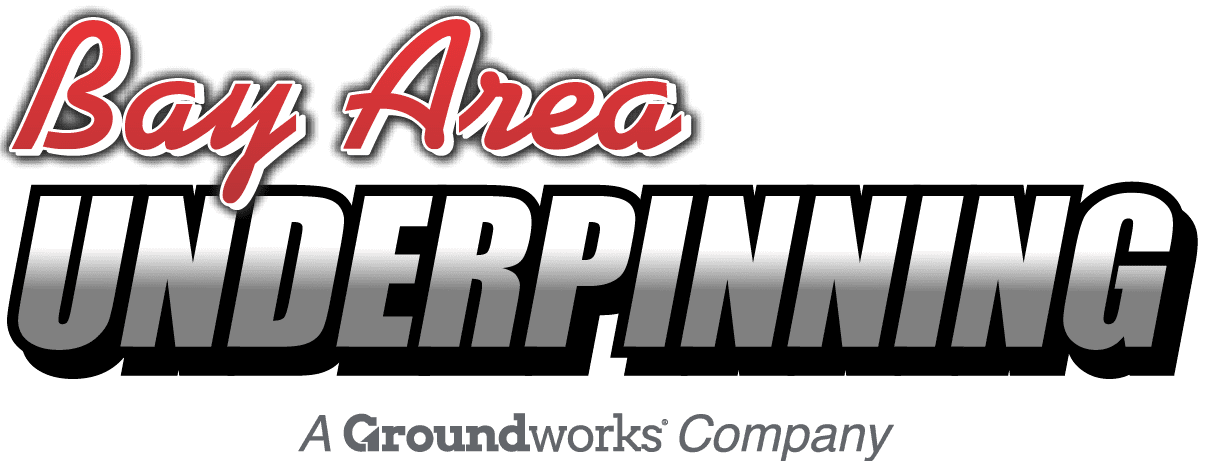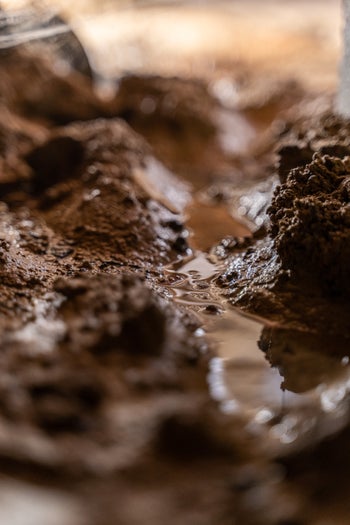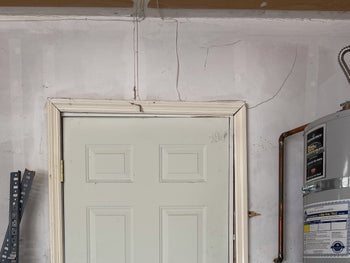A Guide to Leaning Chimney Repair
Table of Contents
1. What Does A Leaning Chimney Look Like?
2. Causes Of A Leaning Chimney
3. Why You Don’t Want A Leaning Chimney
4. Leaning Chimney Repair Options
5. Other Common Chimney Problems
We hate to be the bearer of bad news, but a leaning chimney is serious. It almost certainly means there’s a problem either with the foundation under the chimney or the foundation under your house. Most chimneys are built with their very own foundation underneath. So, you don’t want to ignore a leaning chimney.
But, there’s some good news. Leaning chimneys can almost always be repaired. However, you’ll want to act fast before the problem gets worse and costs you more money to fix.
In this article, we explain why chimneys lean, foundation repair options for a leaning chimney, other types of chimney problems, and more.
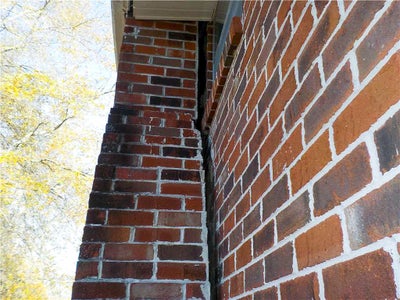
What Does A Leaning Chimney Look Like?
At first, a chimney may not look like it’s leaning. In fact, many homeowners don’t realize their chimney is leaning until it’s obvious to everyone. This is why annual chimney inspections are essential. Problems caught early are easier and less expensive to fix.
However, that doesn’t mean you should sit back and wait passively for your yearly chimney inspection.
Homeowners should be on the lookout for small gaps between the side of the house and the chimney and damage to adjacent materials such as siding, shingles, gutters, etc.
You’ll almost see problems with these areas once the chimney starts to lean. You may notice gaps opening up, chimney leaks, smoke staying indoors, and in some cases, stair-step cracks.
If you see anything suspicious, contact a foundation repair contractor right away for an inspection.
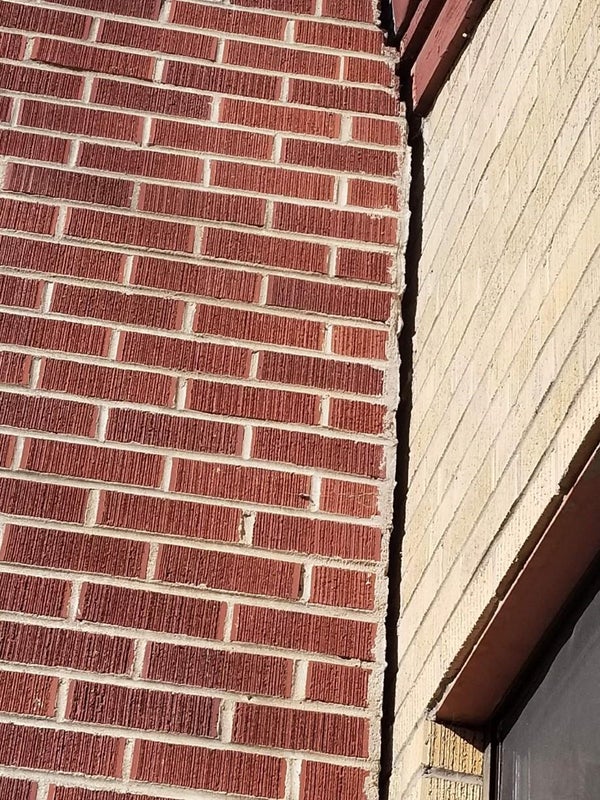
Causes Of A Leaning Chimney
There are many causes of leaning chimneys, but they all usually have something to do with the foundation under the chimney. While chimneys typically have their own foundation separate from the house’s foundation, chimneys attached to older homes often don’t have a proper foundation, and this is why they eventually start to lean.
Chimneys can also start to lean due to:
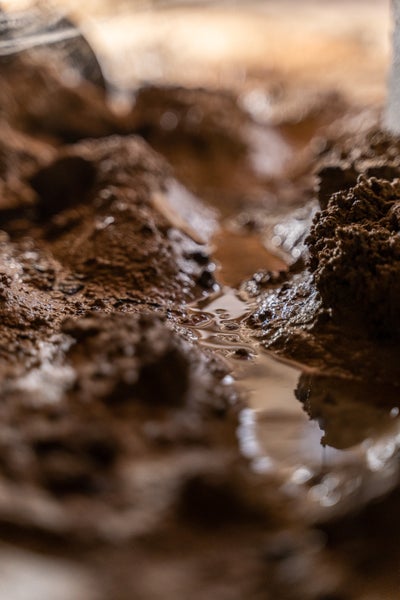
- An insufficient foundation under the chimney. Poor construction of the chimney. Chimneys are heavy and need a solid foundation underneath them with the proper mortar and brick.
- The foundation under the chimney is too shallow and has been damaged by frost heave – Frost heave happens when frozen soil – soil expands as it freezes – pushes up against the foundation. This can cause the foundation to become unlevel and lead to a leaning chimney.
- Damage to the foundation caused by expansive clay soil – Expansive soil swells as it soaks up moisture and shrinks when it dries out. This causes movement in the ground under the foundation and could, over time, cause a leaning chimney. For more information, see What Is Expansive Soil And How Does It Affect A Foundation?
- Inadequately compacted soil – Soil needs to be correctly tamped down before you build something on top of it. If this isn’t done, the structure – house, chimney, or something else – will settle into the soil unevenly after it’s built.
- Soil erosion under the chimney – Some soils are more prone to erosion than others. If the soil washes away, leaving voids behind, the chimney’s foundation will sink into the voids, resulting in a leaning chimney.
- Problems with the concrete used to build the foundation under the chimney – Maybe the concrete used was of inferior quality or didn’t contain rebar. This could cause the foundation to weaken, resulting in a leaning chimney.
- The chimney was built using inferior bricks and mortar.
- The chimney is old, and the bricks and mortar have deteriorated.
- Drainage problems under the chimney’s foundation – Hydrostatic pressure might be pushing against the foundation. Hydrostatic pressure builds up when there’s excess water in the soil around the foundation that can’t drain off.
For additional information, see our page about Foundation Settlement.
Why You Don’t Want A Leaning Chimney
A leaning chimney will cause damage to your house in many ways, including:
- Water intrusion
- Pest infestations
- Mold growth
- Fire hazards
- Falling bricks
A tilting chimney shouldn’t be left as-is. It should be repaired immediately by a foundation expert.
Leaning Chimney Repair Options
Since chimneys usually lean because there’s a problem with the foundation under the chimney, underpinning using helical piers or push piers is a common solution. Typically you may use 2 – 4 piers depending on the size of the chimney’s foundation. The repair is minimally invasive and doesn’t require much excavation. Most of the time, a chimney leaning because there’s a problem with the foundation can be repaired.
Sometimes, a chimney will need to be rebuilt by an experienced chimney mason. This might happen if the chimney is leaning not because of a foundation problem but because there’s extensive damage to the bricks and mortar.
Unfortunately, there is no DIY fix for a leaning chimney. It’s not enough to simply fill in the space between the home and the chimney, although some homeowners try this.
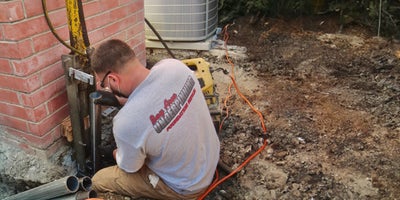
Other Common Chimney Problems
Just because your home’s chimney isn’t leaning doesn’t mean there aren’t other problems with it. In fact, usually, when there’s one problem with a chimney, there will be others. These other problems include:
- Leaks caused by problems with the flashing
- Smoke coming into your home instead of up the flue
- Deteriorated brick and mortar
- Damaged crown or cap
- Problems with the damper
A damaged chimney is a serious fire hazard and should be repaired right away by an experienced chimney mason.
Do you have a leaning chimney? If you’re in our Northern California service area, contact Bay Area Underpinning today and schedule a FREE inspection. We’ll evaluate your chimney, foundation, and home, and then provide you with a no-obligation repair estimate for solutions tailored to your needs.
More Resources
Publish Date:
Last Modified Date:
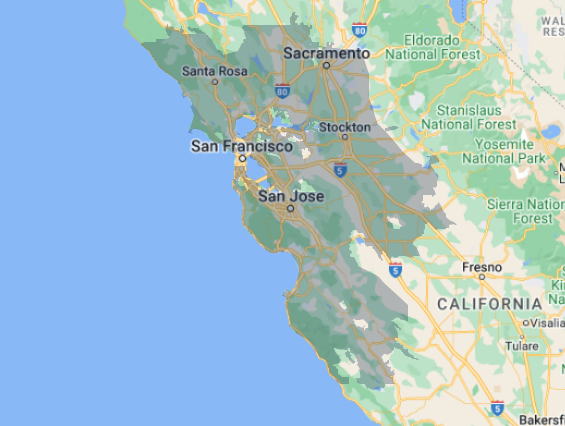
Our Locations
2333 Courage Dr. Suite C
Fairfield, CA 94533
1161 N Fair Oaks Ave
Sunnyvale, CA 94089
